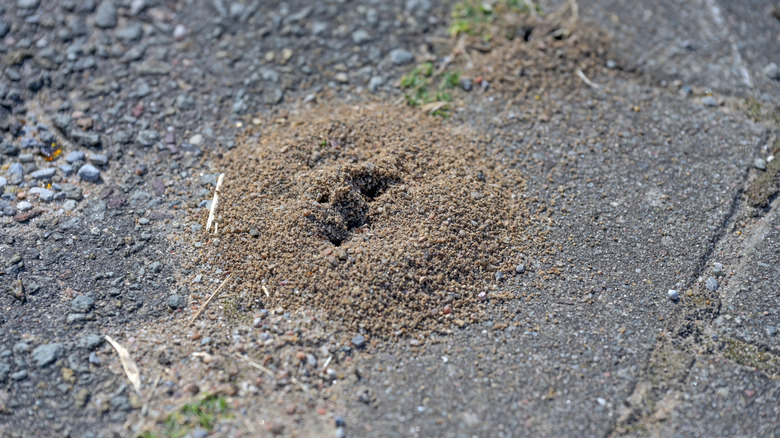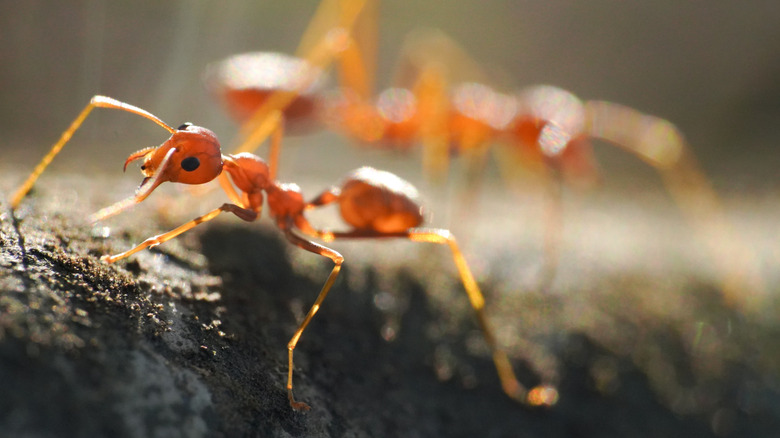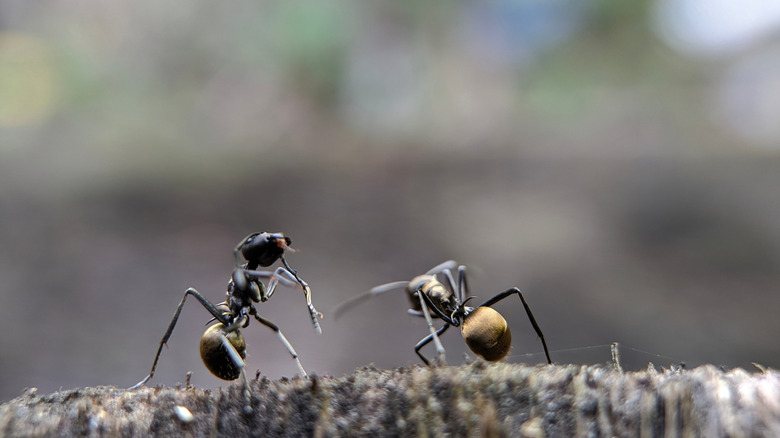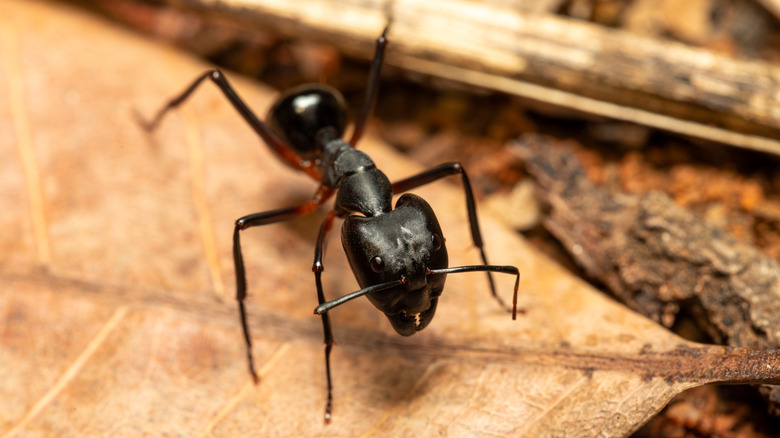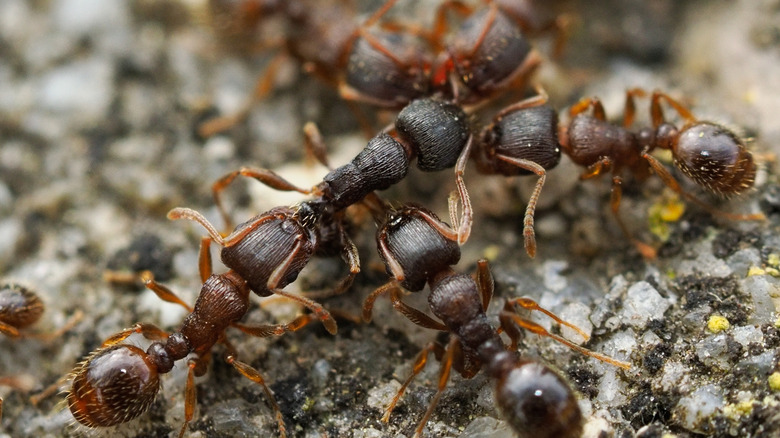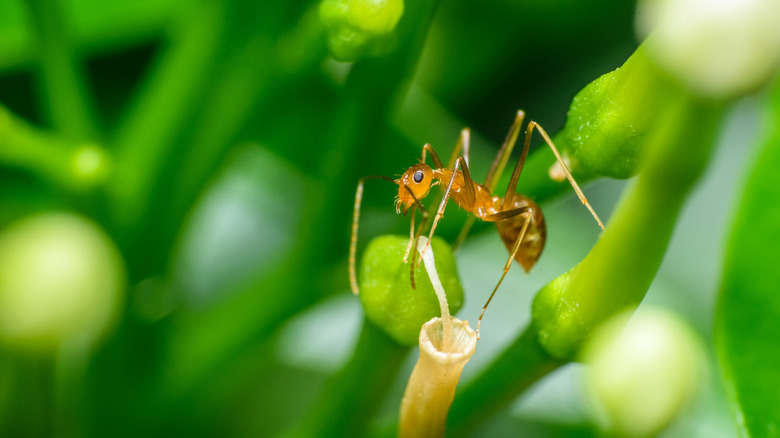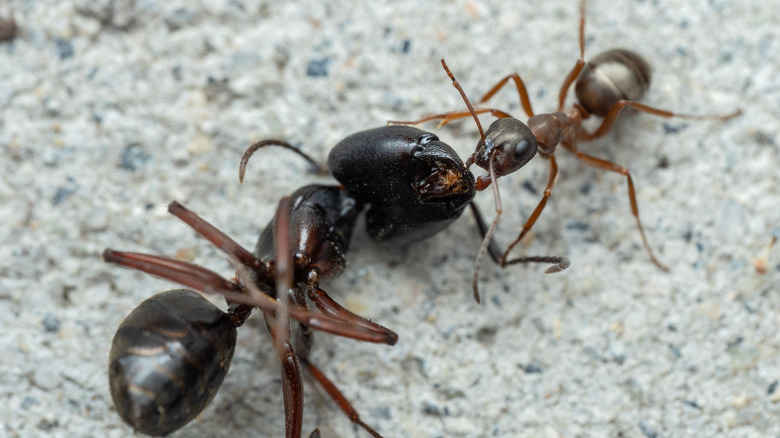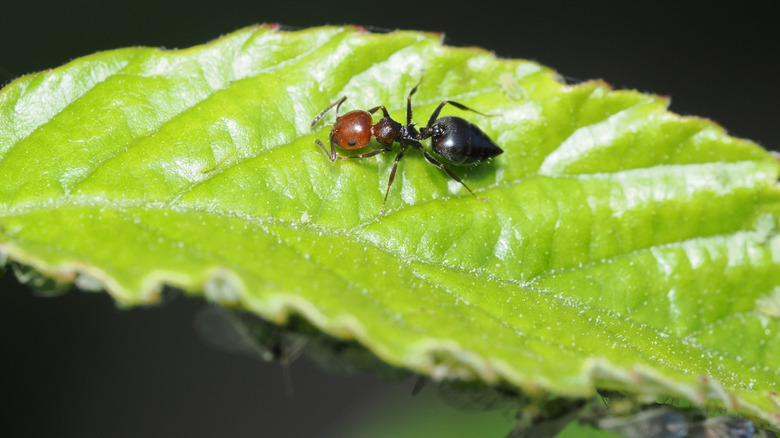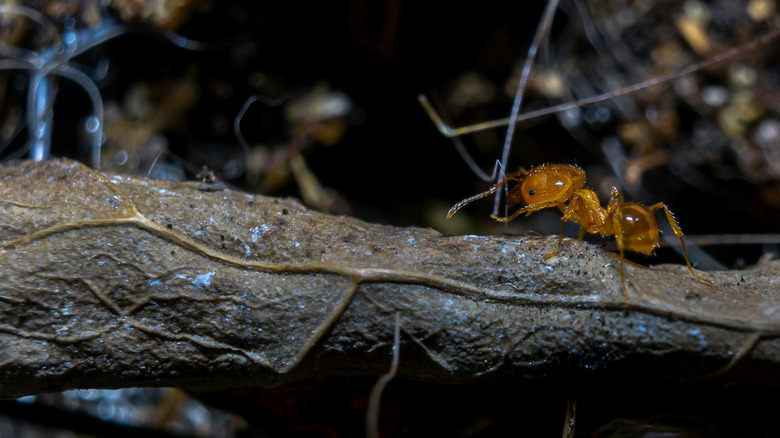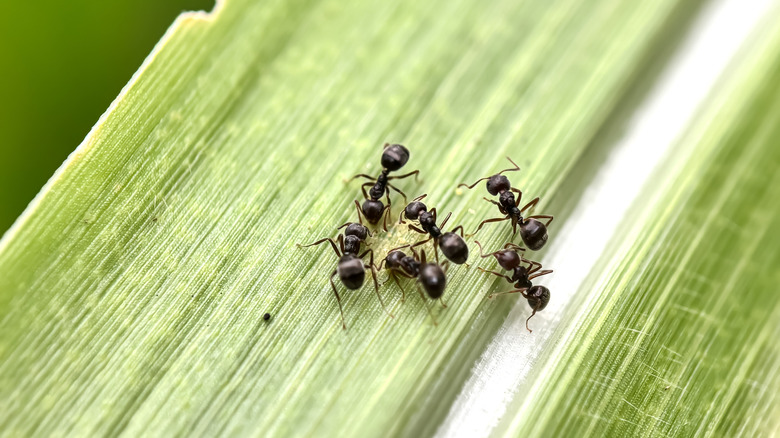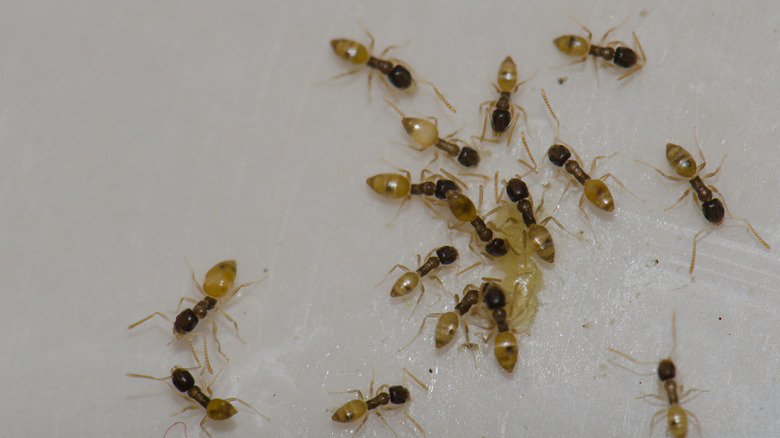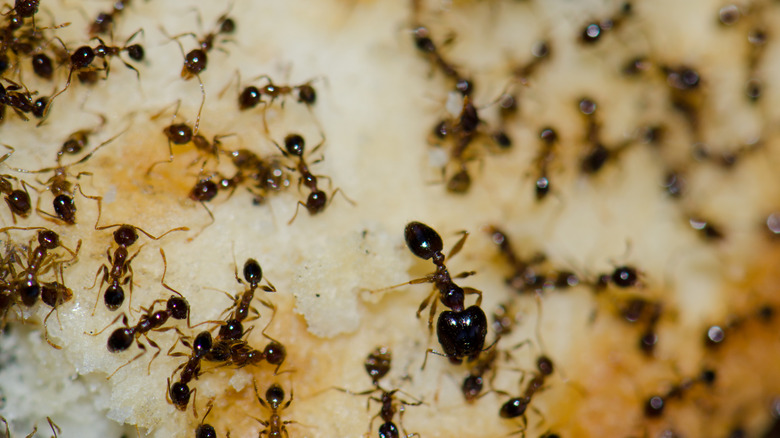11 Types Of Ants You May Find In The Home And Garden And How To Get Rid Of Them
Although scientists have identified over 12,000 species of ants, you'll be relieved to know that only a few are likely to turn up in your house or garden. When you find these unwelcome invaders, identifying what type of ant you're dealing with will help you figure out the best way to get rid of them — or if you even need to. While you'll definitely want to eradicate ants in your home, they can be beneficial to your yard and garden. Ants can deter pests, clean up dead insect carcasses, and help aerate and improve your soil. It really depends if you're dealing with carpenter, pharaoh, or grease, or ghost ants.
However, some ants, including fire ants, attack people and pets, delivering a painful bite. Others can damage building structures and property, necessitating expensive repairs. There are some general measures you can take to keep ants out of your home, including cleaning up any spills or crumbs immediately and making sure all entrances to your home are well-sealed. You can also try any of these eight best ways to get rid of ants. Removing them from your garden is a trickier task, especially when colonies are well-established, and it often isn't necessary for most species. To create a plan of action, you'll need to know what habitat and food the species you're dealing with is attracted to. Then you can make your property less appealing or, as a last resort, use the right type of insecticide.
Fire ants
Anyone who's been stung by one of these aggressive ants can identify them. Solenopsis invicta, or fire ants, are tiny — ¹⁄₁₆ to ⅕ inches long and reddish brown with darker abdomens. They build dirt mound nests in various places, including rotten logs, trees, building walls, and even electrical boxes. Fire ants are difficult to get rid of completely, so control efforts will likely be ongoing and multi-pronged. Use baits for individual mounds and apply organic or low-toxicity pesticides. Clean up common foods that are most likely to attract fire ants to your home and garden.
Odorous house ants
Tapinoma sessile are small dark brown to black ants that release a rotten coconut scent when crushed. This unmistakable smell means odorous ants are living in your home. The worker ants are the same size, around ⅛ of an inch, and they're commonly found in both houses and yards. To get rid of odorous house ants, you need to locate their nests. For outdoor nests, use a pesticide labeled for outdoor use to kill them or create a barrier around your house. Indoors, apply household pesticides directly to nests and place bait along paths of foraging ants.
Carpenter ants
Carpenter ants (Camponotus pennsylvanicus) get their name from the fact that they typically nest in decaying trees or stumps and break them down. However, they'll also nest in the wood in your house, particularly if it's damp. You can identify carpenter ants by their shiny, dark brown to black color. The workers are about ¼ to ½ inch long. You need to locate the parent colony and the satellite colonies to get rid of them. Use an insecticide dust or spray directly on outside nests. Inside, use a product that's safe to use around people and pets, such as diatomaceous earth.
Pavement ants
As you might expect from their name, pavement ants (Tetramorium immigrans) frequently nest in and around patios, sidewalks, and foundations. They build small volcano-like structures of dirt around their nest. The dark brown worker ants are tiny, usually measuring around ³⁄₁₆ inches long. They enjoy greasy and sweet foods and will venture inside houses to reach it. Baits are an effective method of eliminating colonies. Set them out wherever you see pavement ants foraging for food. Keep offering the bait until the ants stop feeding. This usually takes around five days or so for small infestations.
Pharaoh ants
Monomorium pharaonis, or pharaoh ants, are among the most difficult ants to control because of their sheer numbers. The worker ants are approximately ¹⁄₁₆ inches long and light yellow to reddish-brown with darker abdomens. A single site may have hundreds of colonies. The nests are tiny, making them difficult to locate. These ants can also spread diseases and infiltrate sealed products. Using standard pesticides can cause colony spread because the ants move their nests to avoid the chemicals. Instead, use baits designed to attract them.
Field ants
With their dark coloration in shades of red, black, and brown and size ranging from ¼ to ⅛ inch long, field ants look similar to carpenter ants. However, they have distinct eyes on the top of their heads. Field ants include multiple species under the genus Formica and are more likely to be a nuisance in your garden than in your house. You can control them by treating their large nests with insecticide granules, dust, or liquid.
Acrobat ants
Their heart-shaped abdomens set acrobat ants (Crematogaster ashmeadi) apart from other species. These ants nest in rotting wood, under bark, and on the forest floor. However, they may wander into water-damaged houses looking for food. If you find carpenter ants in your yard or indoors, encourage them to move along by removing any dead wood, repairing leaking plumbing and moisture damage, and sealing cracks to the outside.
Grease ants
Grease ants (Solenopsis molesta), also called thief ants, are among the smallest common pest ants. They are approximately ¹⁄₁₆ inches long and have light to dark brown or yellow shiny bodies. They get their name from their preference for grease and meat. Grease ants can be difficult to eradicate indoors. Bait is the most effective option. Purchase bait with a high fat content or mix it with oily foods such as peanut butter or vegetable oil to get them to take it.
Black garden ants
Black garden ants (Lasius niger) are tiny black ants usually found outdoors. They measure about 0.1 to 0.2 inches long and are the quintessential picnic invaders. Their varied diet includes seeds, insects, and nectar. These diminutive ants build enormous colonies in soil. They can be beneficial in your garden, but you may want to keep them out of your house. To discourage them indoors, seal off points of entry, clean up crumbs or spills, and trim plants back from the exterior.
Ghost ants
Ghost ants (Tapinoma melanocephalum) have a light, translucent abdomen and legs paired with a dark head and thorax. They are less than ¹⁄₁₆ inches long. They live in colonies with many queens and thousands of workers, making them hard to manage. Though spraying the nests with insecticide works, each colony can have multiple nests. Using baits composed of 1% to 5% strength boric acid and sugar water can be a better tactic.
Argentine ants
Argentine ants (Linepithema humile) are dull brown and ⅛ inches long. These pests give off a musty odor when crushed and eat sweets, fresh fruit, and plant buds. They typically nest outdoors in soil or under debris but will make their way into your home in long trails to find food. They're notoriously difficult to get rid of because a colony can contain millions of ants and many queens. Keep them out of your house by practicing good sanitation habits. Use bait to get rid of the nests.
